Best drought tolerant plants: 21 choices that will thrive in hot, dry areas
Our pick of the best drought tolerant plants are ideal for hot weather and low-maintenance gardening

Anne Swithinbank
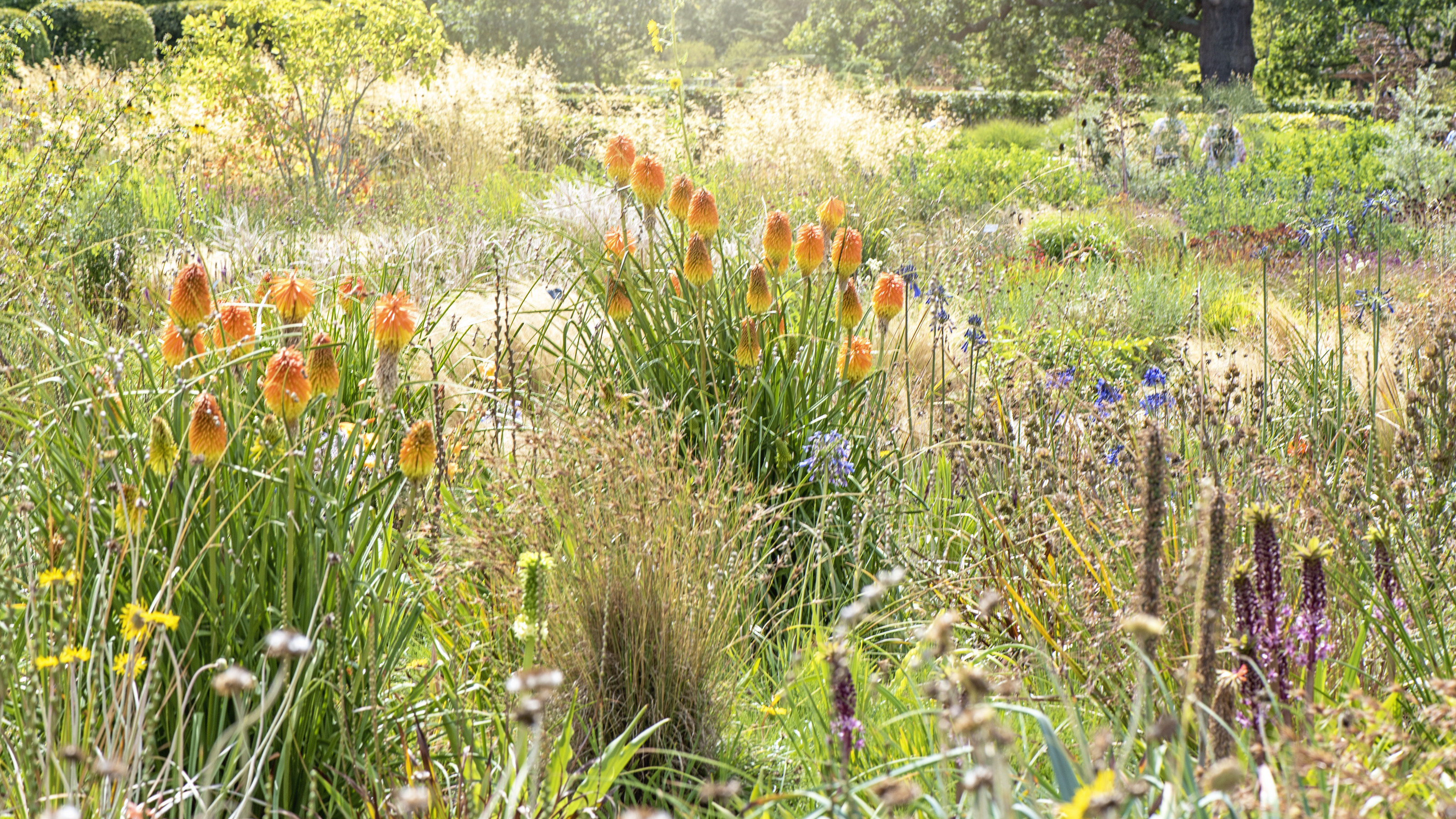
Choosing the best drought tolerant plants means that you can cultivate a low-maintenance garden that still looks lush and full of life. Dry, dusty, or gravelly soil and full sunlight are challenging conditions for some plants. But fortunately, there is a wide range of varieties that are adapted to grow in these sites, something which is increasingly important as climate change sees an increase in dryer, hotter summers.
Opting for drought resistant plants which require less water does not mean compromising on style or choice. There is absolutely no need to lose out on color, fragrance, or impact for your flower bed ideas.
Mediterranean plants are perhaps the best known to be drought resistant. Rosemary, bay, olive, and lavender originate in countries where rainfall is low. Plants from South Africa, such as agapanthus and red hot pokers will also take care of themselves once established.
However, even drought resistant plants will need some water when they are first planted. 'It is important to look after them when they are newly planted, and that means keeping them hydrated,' says plant expert and garden designer Laura Heybrook of Dale & Heybrook Garden Designers. Once the plants are established it is a different story. 'Drought resistant plants do not need watering,' she says.
Laura’s top tip is, 'the bigger the plants, the longer they will need watering initially and that could be up through the first summer and autumn.' However, once rooted, 'you can go away on holiday and not have to worry about them at all.'
21 of the best drought tolerant plants to brighten up your yard
These drought tolerant plants are perfect for colonizing areas of sunny, well-drained soil in gardens where rainfall is low. Once settled in, they are great at taking care of themselves and bounce back into health quickly after prolonged dry spells.
1. Dierama pulcherrimum
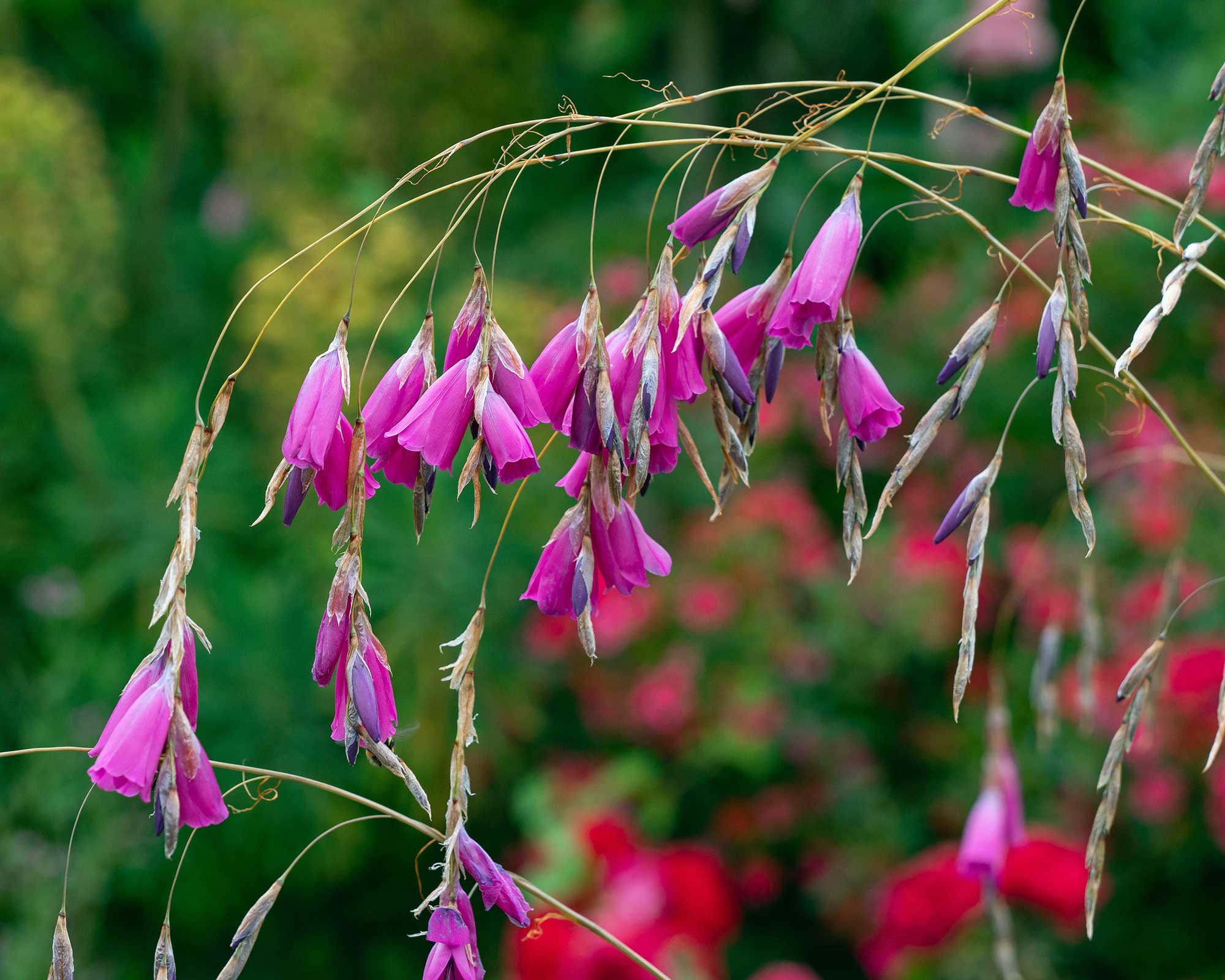
- Height: 4ft (1.2m)
- Spread: 24in (60cm)
- Hardiness: USDA 8b/9a (UK H4)
Originally from South Africa, Dierama pulcherrimum, otherwise known as angel's fishing rod, spends a year or three establishing itself as a clump of evergreen grassy foliage.
In late summer, plants live up to their name by sending up long, elegant stems from which silvery-pink flowers dangle and sway. Well-drained soil is a must if plants are to survive winter.
2. Bupleurum fruticosum
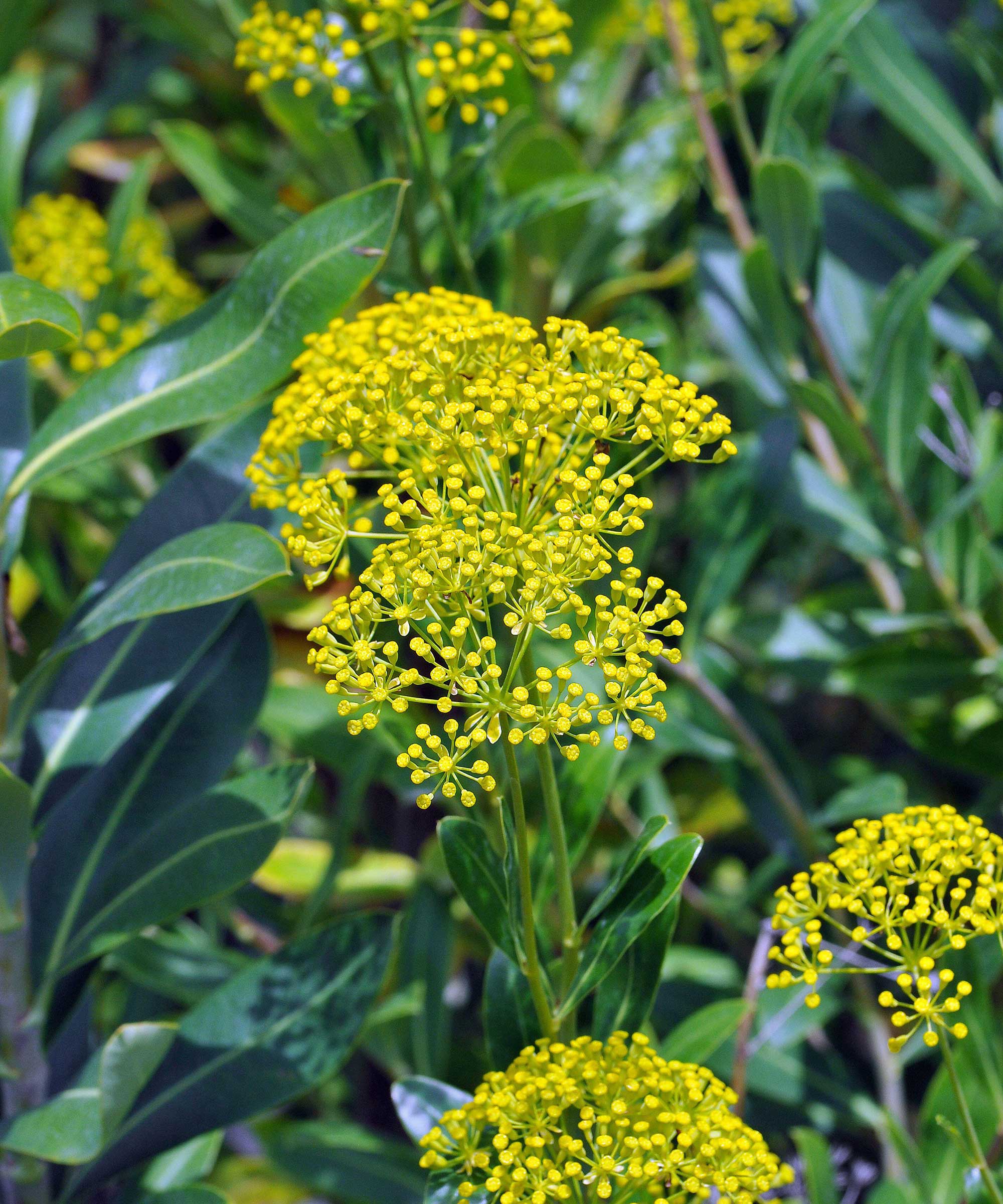
- Height: 6ft (1.8m)
- Spread: 6ft (1.8m)
- Hardiness: USDA 8b/9a (UK H3–H4)
From Mediterranean regions, this neat evergreen from the cow parsley tribe is known as shrubby hare's ear.
Planted in a sheltered spot, it will reach a fair size but fortunately responds well to a thorough spring haircut (though not into very old wood). Shiny blue-green leaves are joined by neat, domed umbels of small, starry pale yellow flowers from late summer to autumn.
3. Anthericum liliago
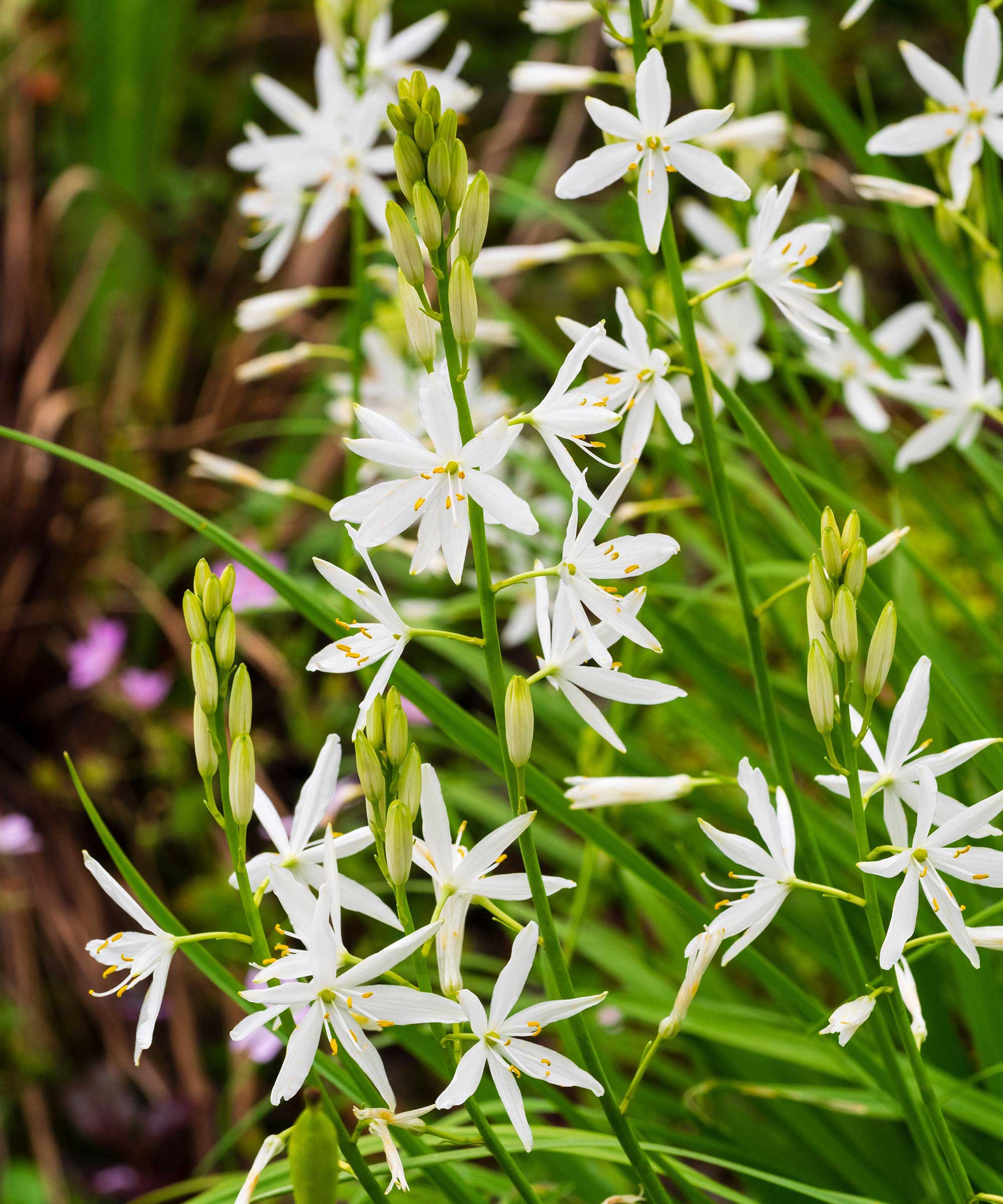
- Height: 30in (75cm)
- Spread: 12in (30cm)
- Hardiness: USDA 7b/8a (UK H4)
Fleshy-rooted European St.Bernard's lily is reminiscent of an upright spider plant. Try 'Major', a large-flowered cultivar that's happy to make clumps of long, narrow gray-green leaves joined from spring into summer by tall stems of white flowers resembling small lilies.
Plants die back for winter and are easily multiplied by dividing clumps in spring.
4. Hylrotelephium telephium
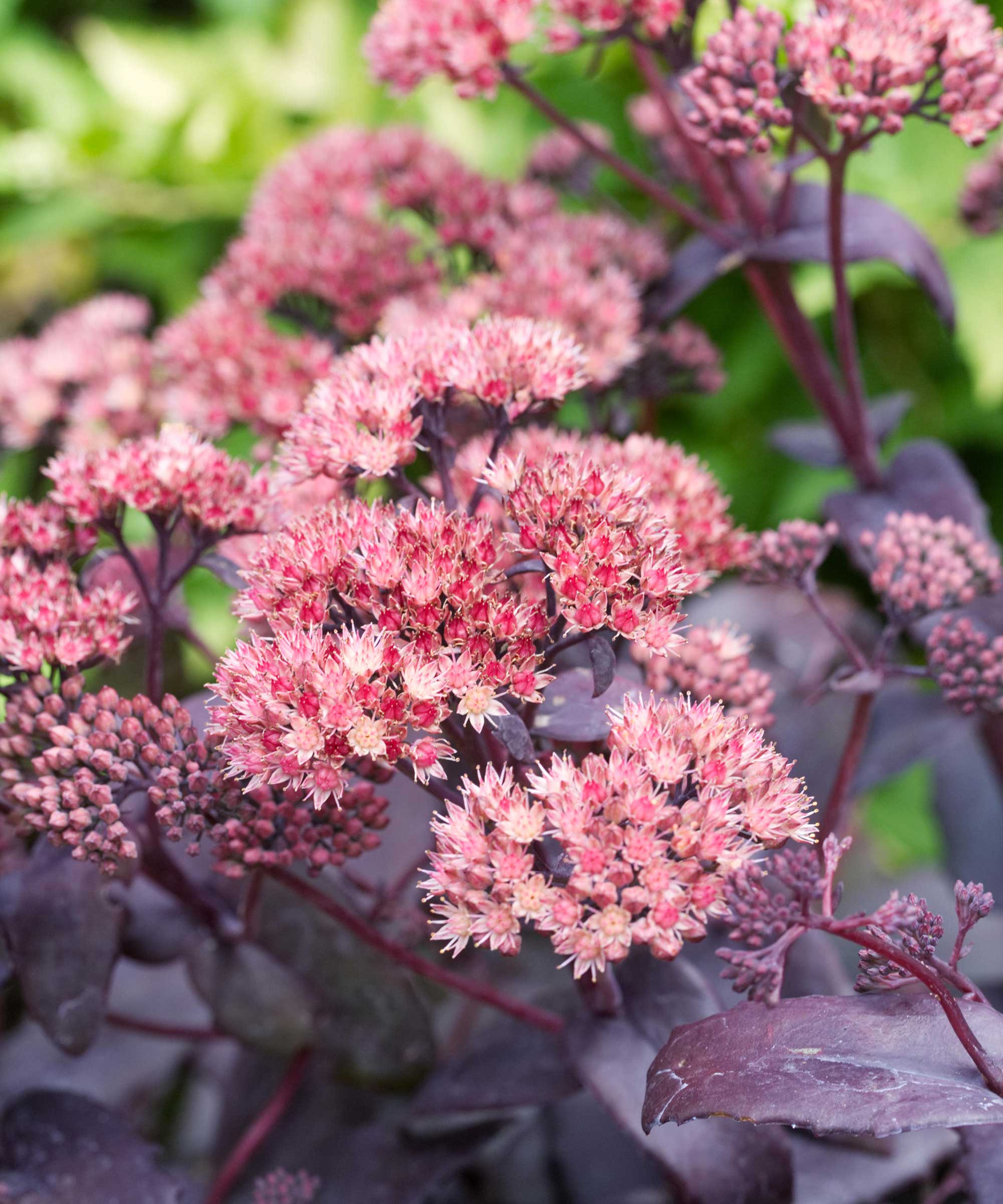
- Height: 20in (50cm)
- Spread: 20in (50cm)
- Hardiness: 6a-1 (UK H4)
Known as sedum or orpine, try 'Purple Emperor' for a neat and compact perennial that dies back in winter and bursts back to life in spring.
The young leaves have a smoky bloom, turn deep purple, and by late summer, dark stems are topped by heads of maroon buds opening to pale, purple-pink flowers. Propagate by spring division or early summer cuttings.
5. Bearded iris
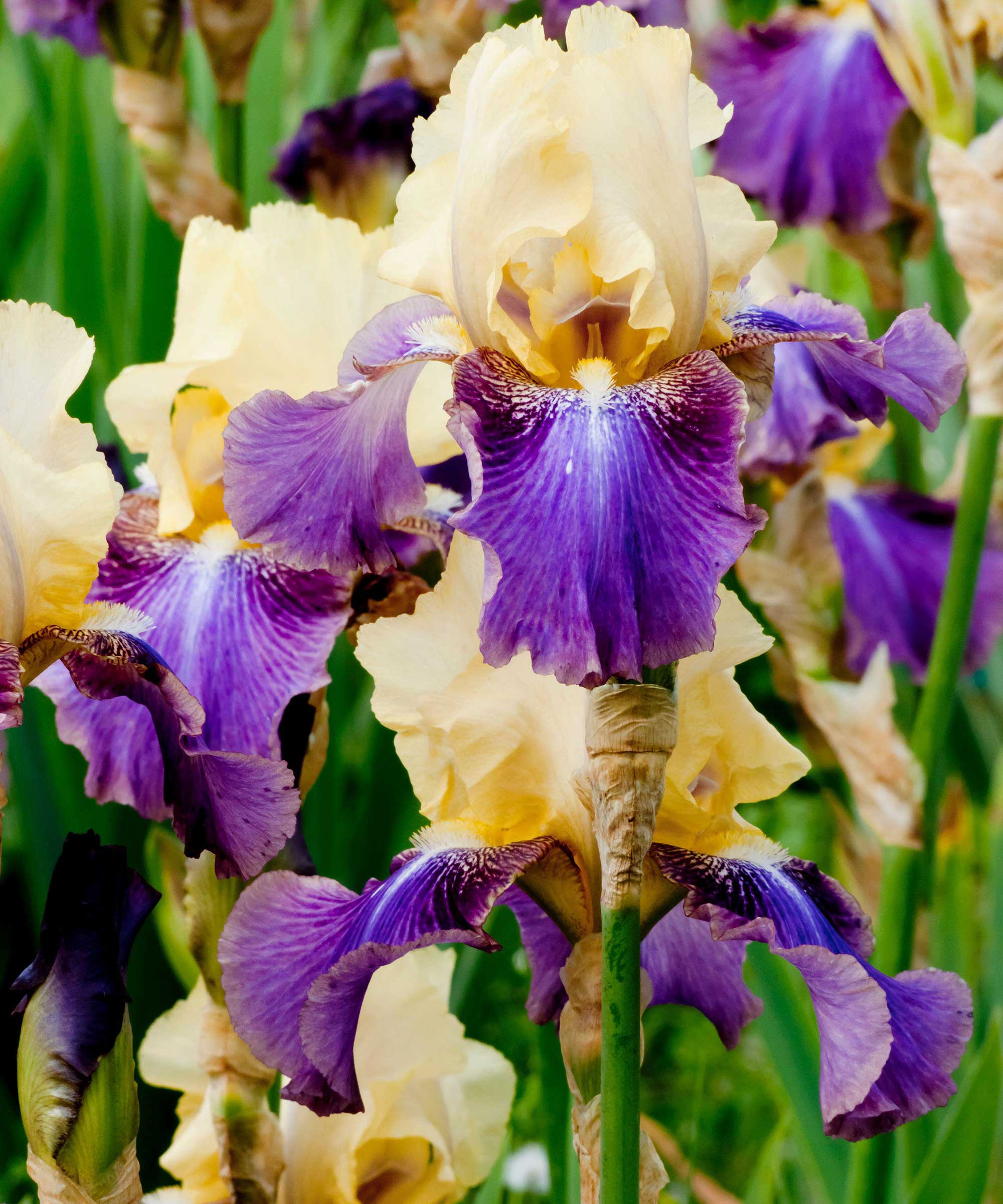
- Height: 3ft (1m)
- Spread: 10in (25cm)
- Hardiness: USDA 6b/7a (UK H3)
The 'Ballyhoo' bearded iris bears ruffled blooms in late spring and early summer, with yellow standards and violet falls. All of this tribe, from the shortest early-flowering irises to the tallest and latest, are plants for hot, dry areas.
Plant them with the rhizome surfaces showing and facing the sun and keep them clear of weeds and other growth.
6. Oenothera lindheimeri
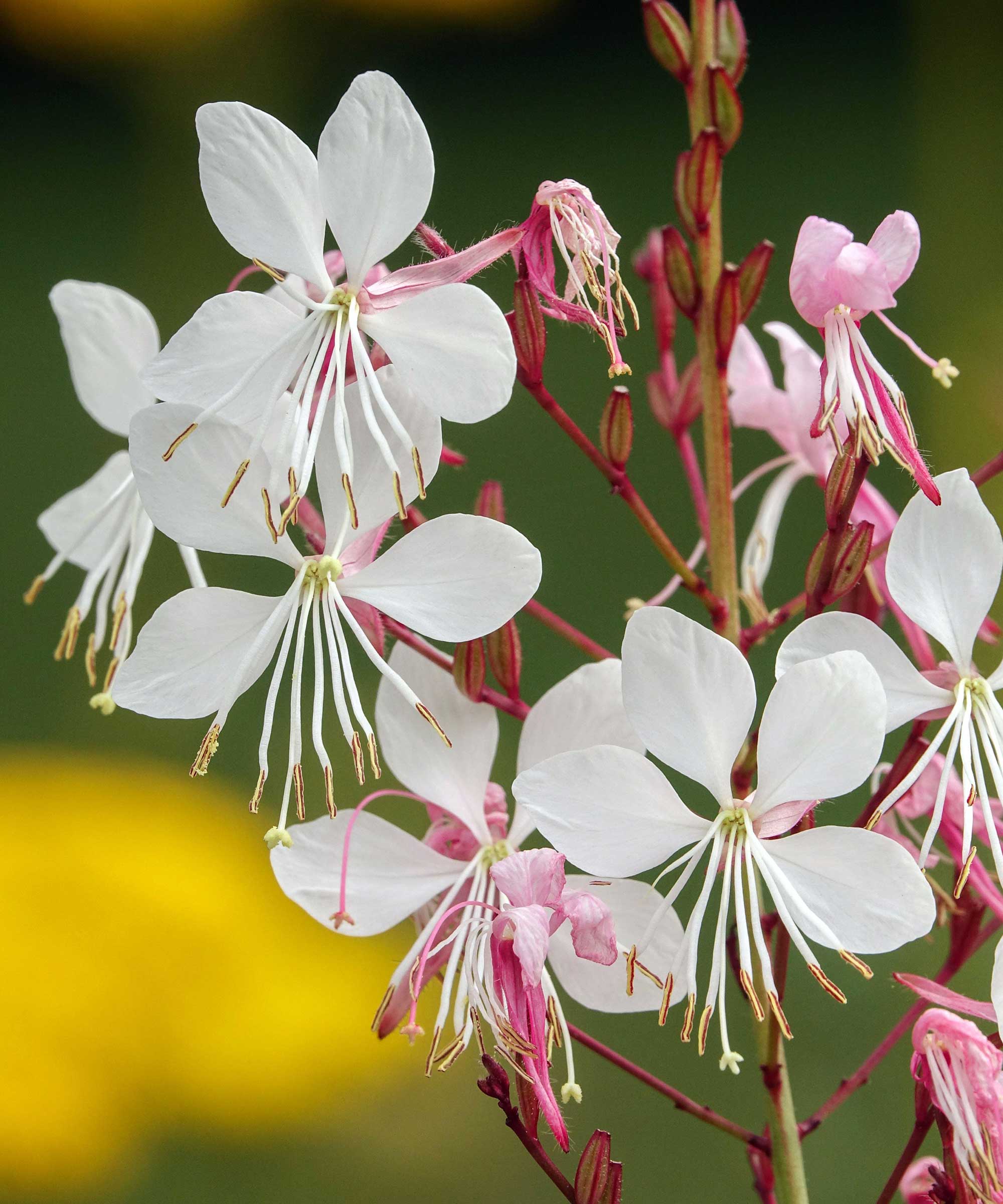
- Height: 30in (75cm)
- Spread: 18in (45cm)
- Hardiness: USDA 8b/9a (UK H4)
Better known by the previous name gaura, this herbaceous perennial has an airy, upright habit. Go for 'Whirling Butterflies' – a lovely cottage garden plant. Its narrow stems bear pink buds opening to white flowers seeming to hover around the plant from late spring to fall, when plants turn pinkish-red.
They look good en masse, so propagate by division or basal cuttings in spring or semi-ripe cuttings in summer.
7. Salvia patens

- Height: 12in (30cm)
- Spread: 12in (30cm)
- Hardiness: USDA 9b/10a (UK H3)
Mexican gentian sage is a classic choice for a hot, dry garden and can store moisture in underground tubers. Large sky blue flowers open in summer and autumn but the plants then die back.
On well-drained soils they are content under a dry mulch but on colder, heavier, wetter soils lift, pot and keep under cover during winter. Our dedicated guide has lots of tips on how to prune salvias to keep them looking their best.
8. Tulbaghia violacea
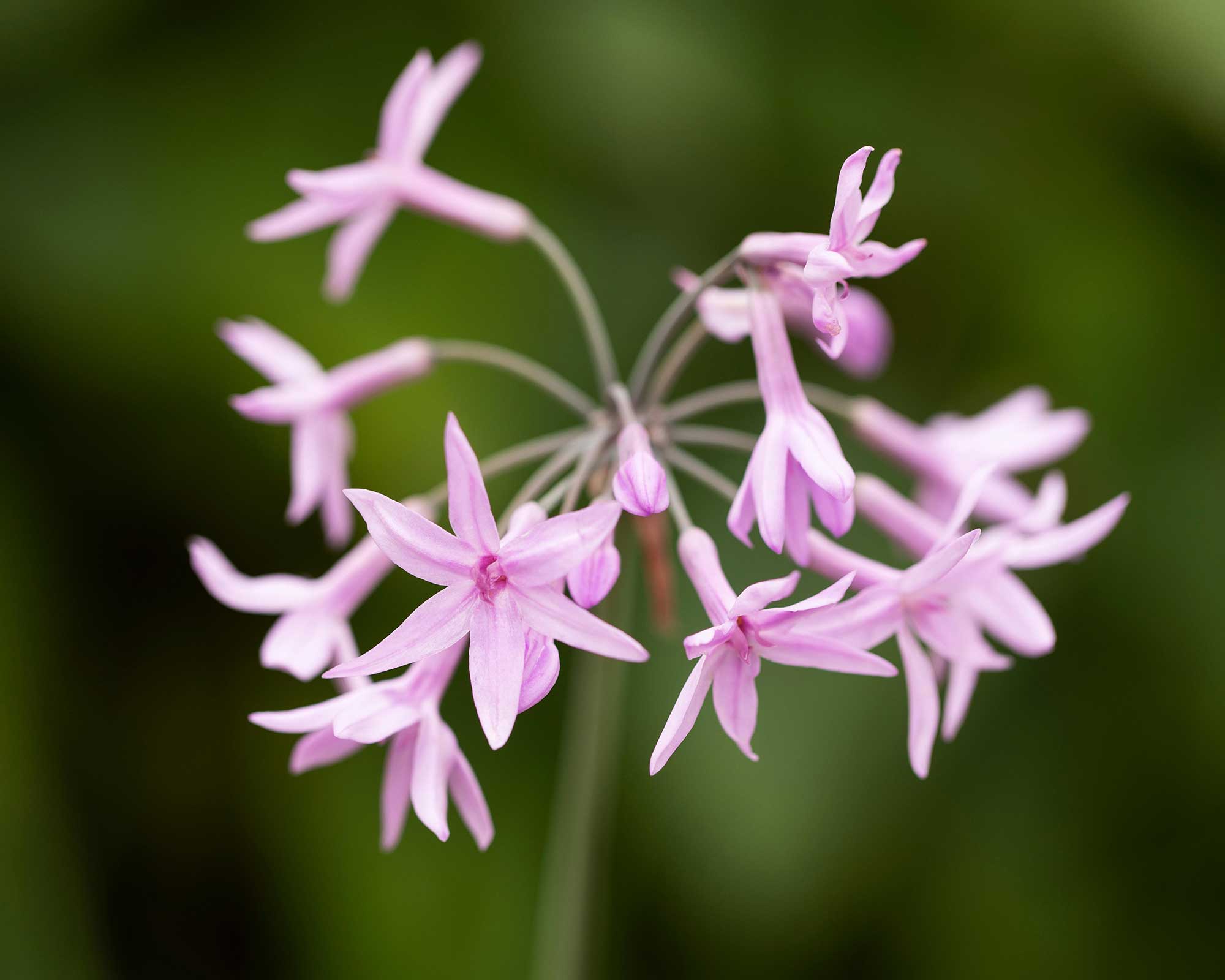
- Height: 18in (45cm)
- Spread: 10in (25cm)
- Hardiness: USDA 8b/9a (UK H3)
South African society garlic is certainly a pongy plant, especially when disturbance releases a strong whiff of foxy garlic. However, it does look very pretty.
From a rhizomatous base, leaves rise in spring, joined by stems bearing umbels of evening-scented soft violet-colored flowers in late summer and early fall. Divide in spring and plant with silvery cotton lavender for an attractive combo.
9. Sempervivum arachnoideum
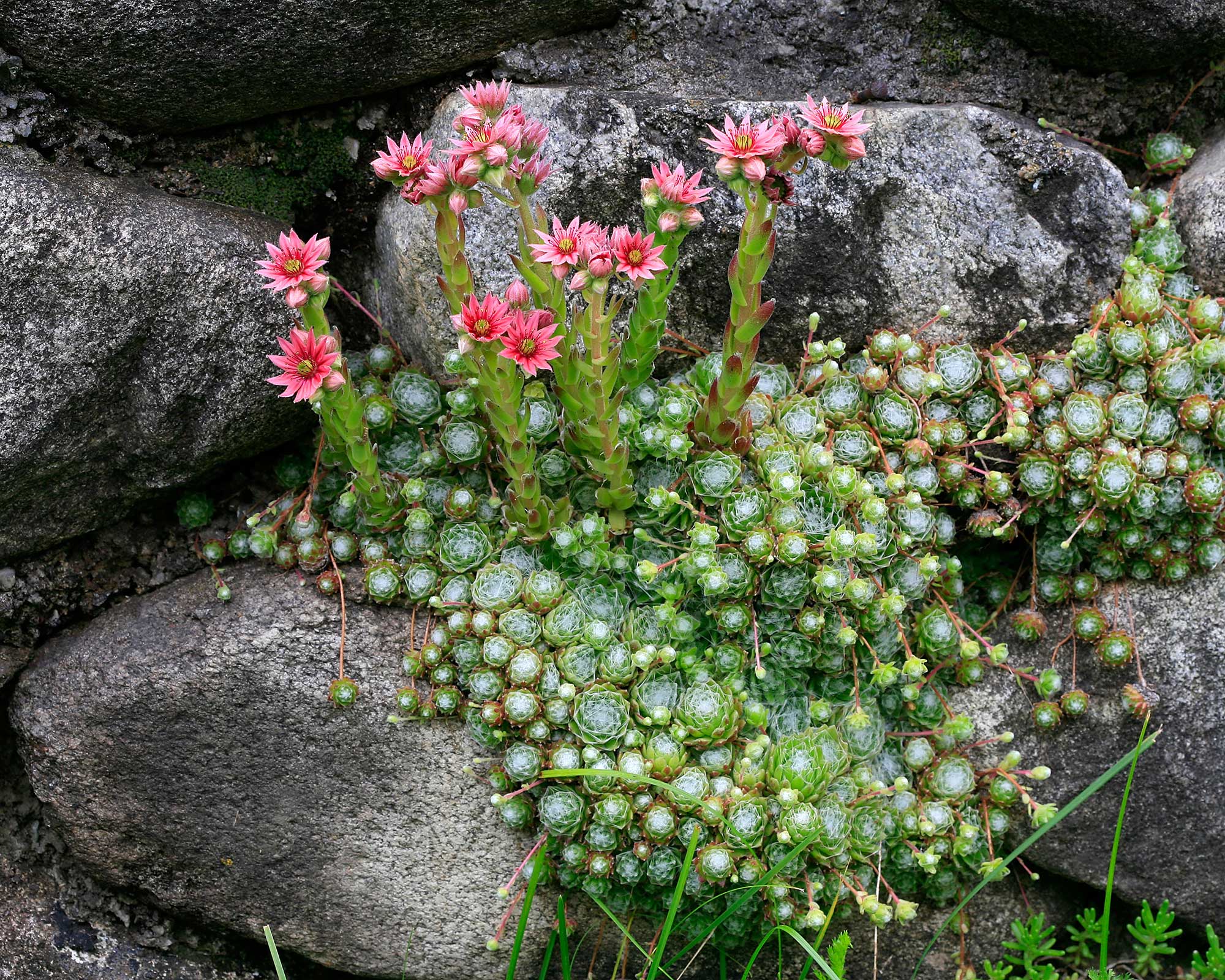
- Height: 3in (8cm)
- Spread: 12in (30cm)
- Hardiness: USDA 6a-1 (UK H4)
The durable cobweb houseleek originates from the European Alps and Carpathians, where web-like hairs protect the growing points from harsh sun and moisture loss. These make a great drought-proof pick for container gardening, and they're happy to colonize old bricks, boots, and shoes with equal enthusiasm.
During summer, mature rosettes rise and terminate in pink flowers before dying off. Propagate by younger offsets.
10. Artemisia ludoviciana
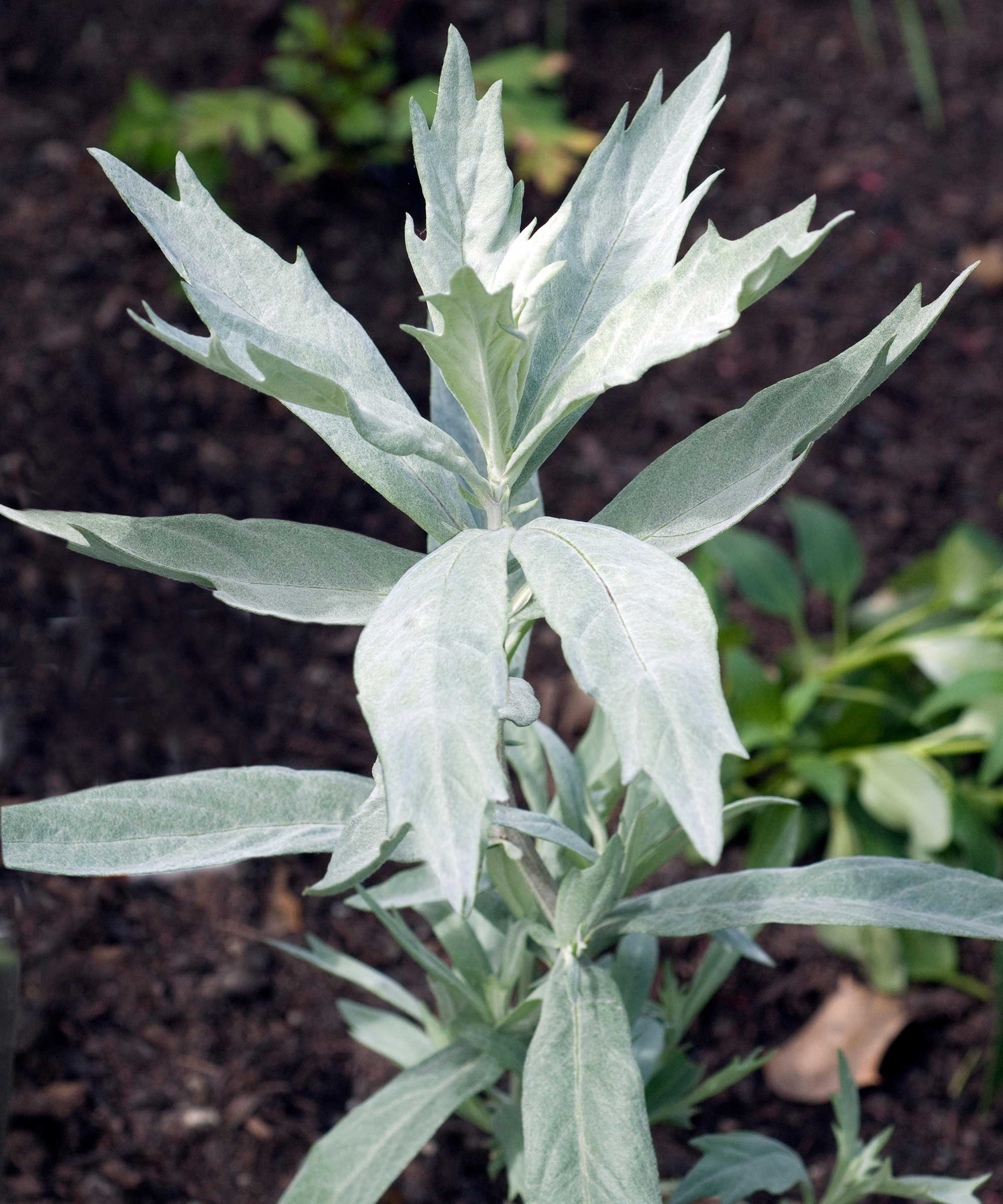
- Height: 24in (60cm)
- Spread: 24in (60cm)
- Hardiness: USDA 6b/7a (H4)
'Valerie Finnis' is a good pick if you want to add more silver-foliaged drought tolerant plants to your scheme.
The felting of this perennial western mugwort is well-designed to protect leaves from hot sun and drying winds. This plant is grown for foliage effect rather than flowers and is usually cut back as flower buds form to maintain a compact mass of silvery growth. Plants die back in the autumn and grow again in spring.
11. Convolvulus cneorum
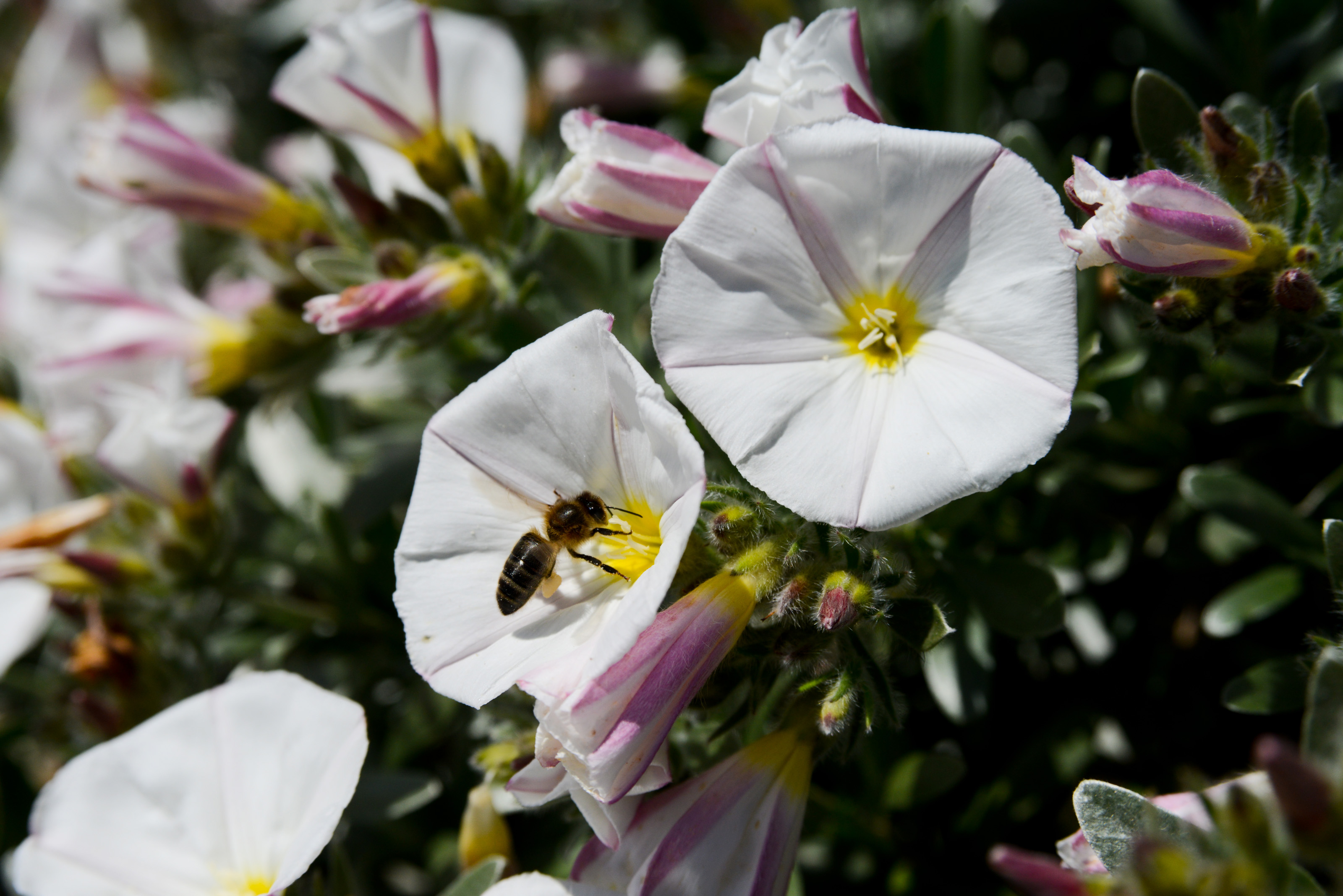
- Height: 24in (60cm)
- Spread: 3ft (1m)
- Hardiness: USDA 8b/9a (UK H3)
A Mediterranean native, Convolvulus cneorum has soft, silvery foliage year-round. White trumpet-shaped flowers with a yellow center appear from spring to the middle of summer.
To keep the shape looking compact and bushy, prune it in summer after it has finished flowering. It is very tolerant of dry conditions and would work perfectly with Mediterranean garden ideas.
12. Cistus
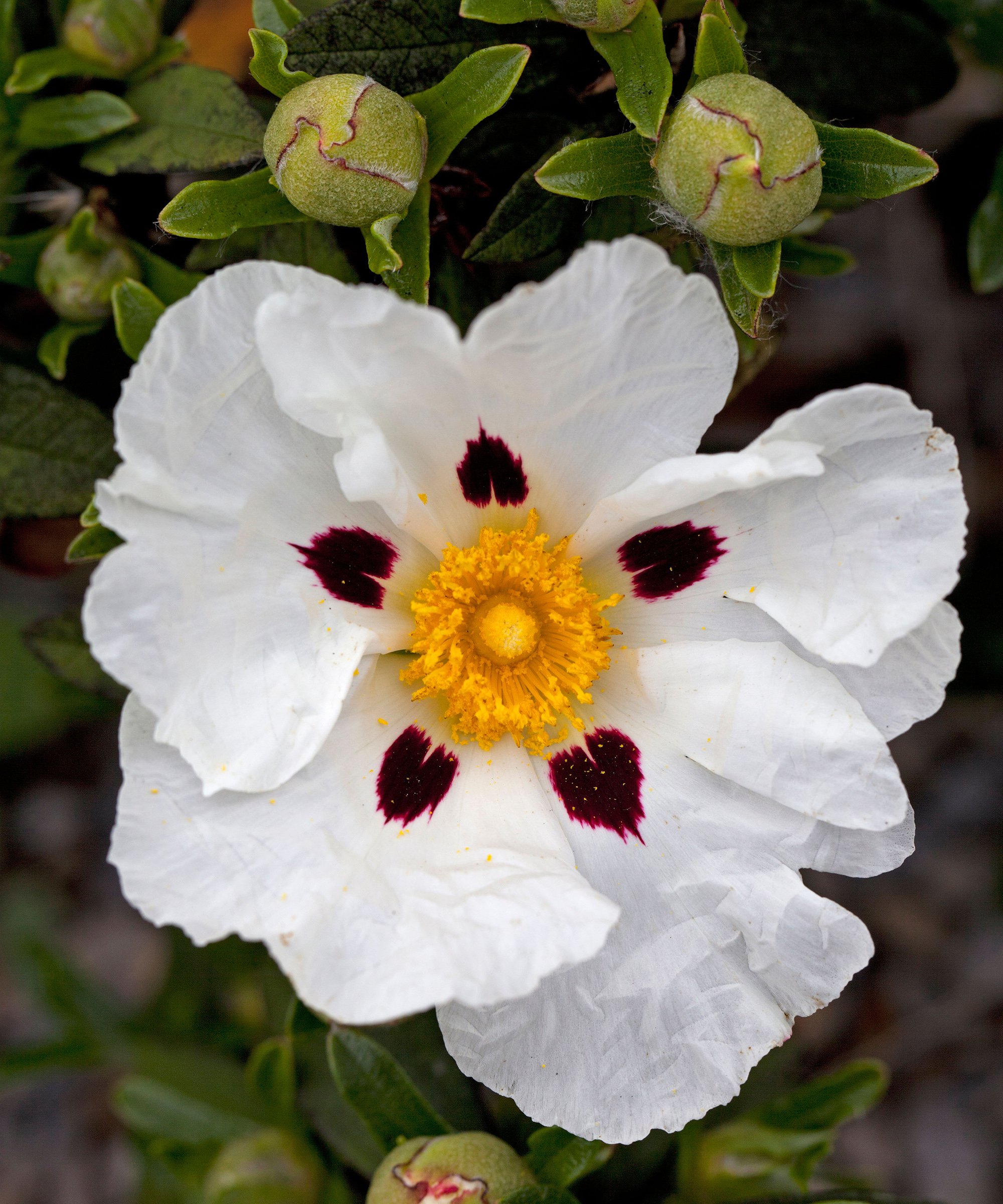
- Height: 6.5ft (2m)
- Spread: 5ft (1.5m)
- Hardiness: USDA 8–11 (UK H4)
Also known as 'rock rose', these evergreen shrubs are one of the best drought tolerant plants. They have a succession of pretty, tissue paper flowers, each one lasting for just a day. There are many cistus varieties, but try 'Graysword Pink' for gray-green leaves and saucer-shaped pale pink flowers.
Another lovely choice is 'Alan Fradd', which has large white flowers with a crimson patch at the center, combined with golden anthers. The plants do not need much pruning, which makes them truly low-maintenance shrubs.
13. Celmisia semicordata
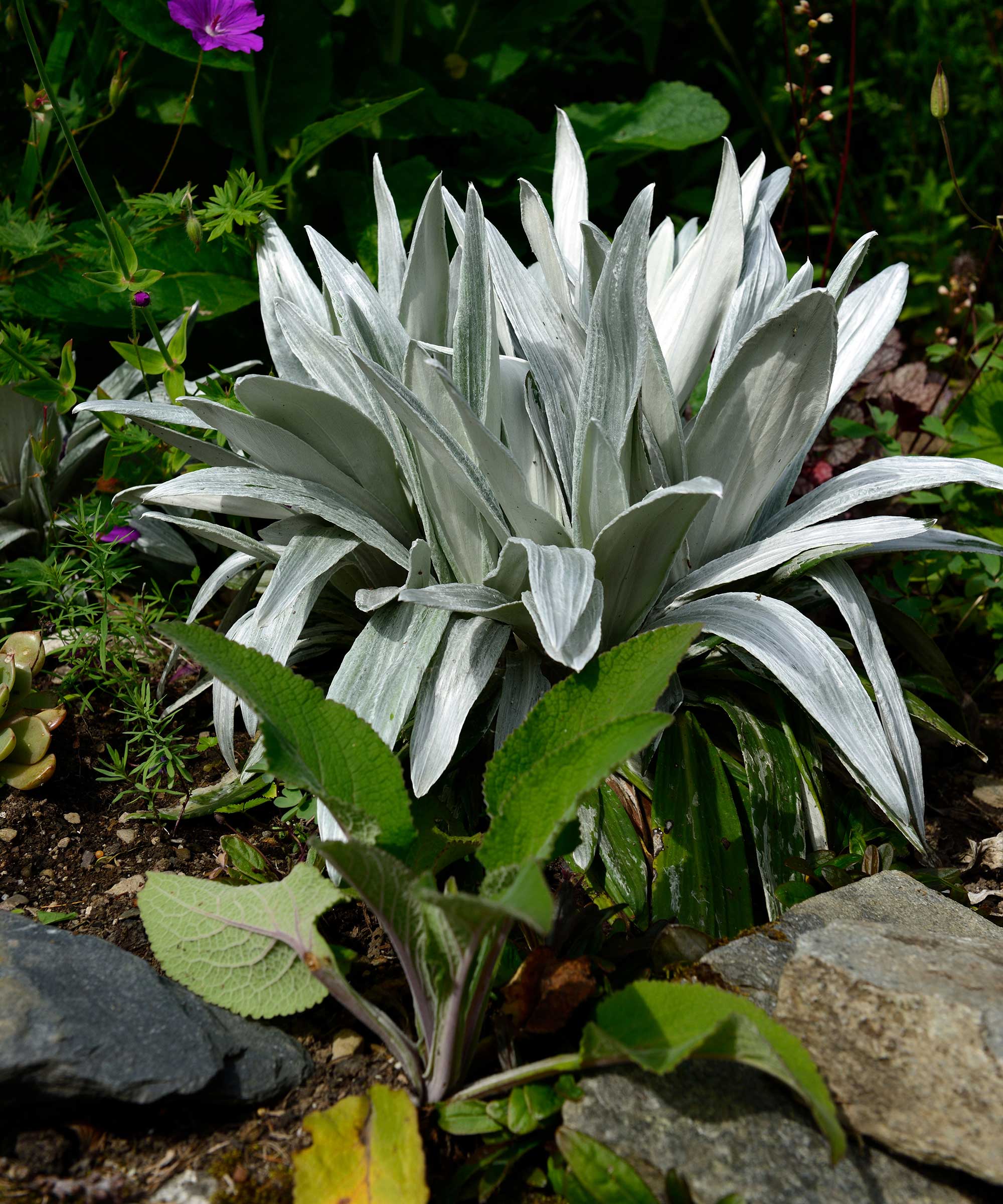
- Height: 18in (45cm)
- Spread: 18in (45cm)
- Hardiness: USDA 7b/8a (UK H4)
The large mountain daisy from New Zealand makes a superb drought tolerant specimen for the dry garden or interspersed with landscaping with gravel.
Tough evergreen leaves clad with silky hairs and with white undersides grow in rosettes forming long-lived clumps. During summer, these are joined by white daisy-like flowers 3in (8cm) across. The plants must have good winter drainage.
14. Agapanthus
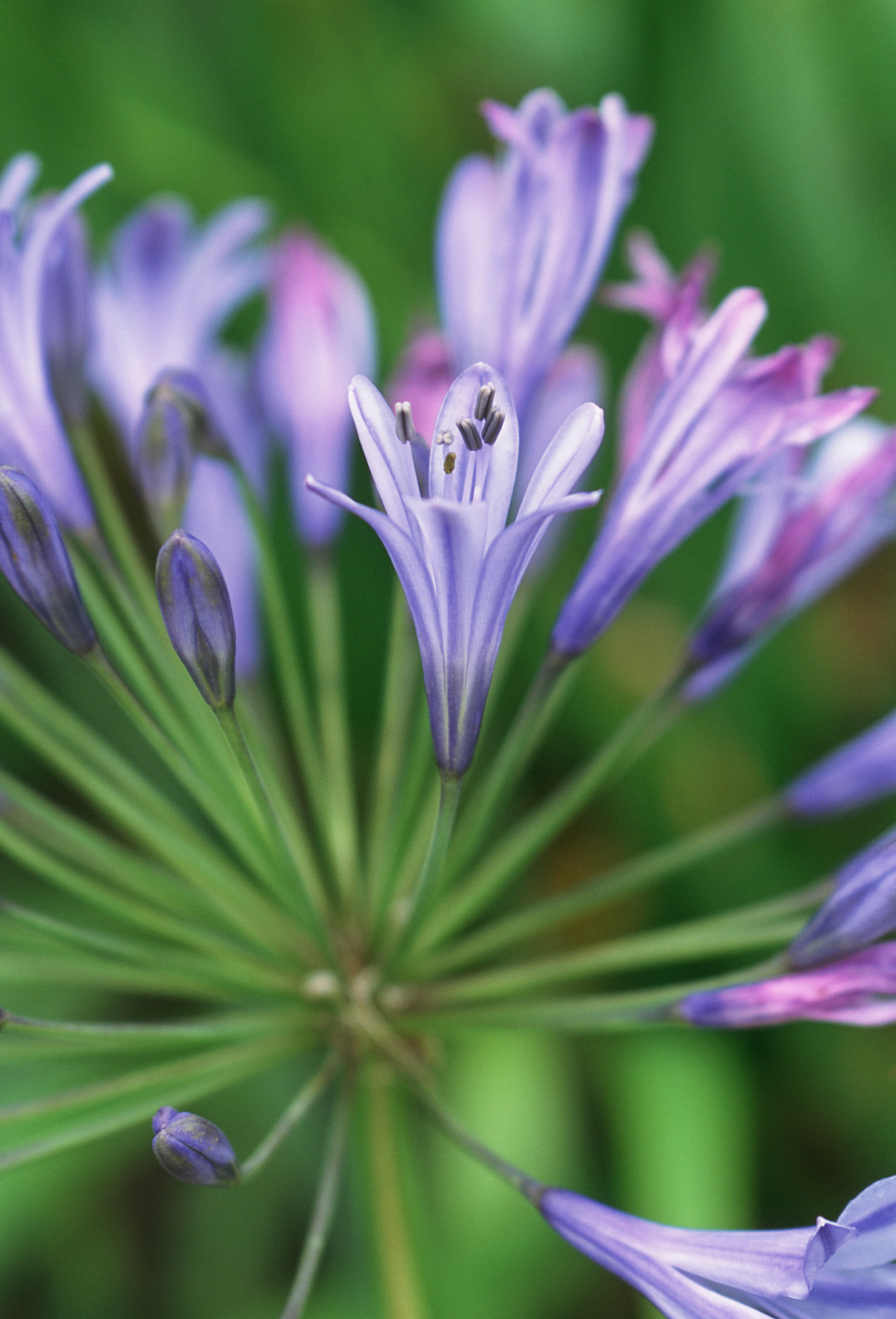
- Height: 2.3ft (0.7m)
- Spread: 1.6ft (0.5m)
- Hardiness: USDA 8–10 (UK H3)
Lofty agapanthus with their long, strong stems, large spherical heads in purple, blue, or white, and narrow, strappy leaves, will create impact and height from mid-summer to early autumn. You can plant them in the ground in a sheltered spot in full sun, or put them in a pot to add a striking look to your patio or deck.
It's certainly worth learning how to grow agapanthus as these South African natives are herbaceous perennials, so they will come back year after year. 'Despite their exotic appearance, they are as tough as old boots,' says garden designer Laura Heybrook. 'You can leave them in a pot, go away on holiday, and they will still be flowering when you return.'
15. Erigeron karvinskianus
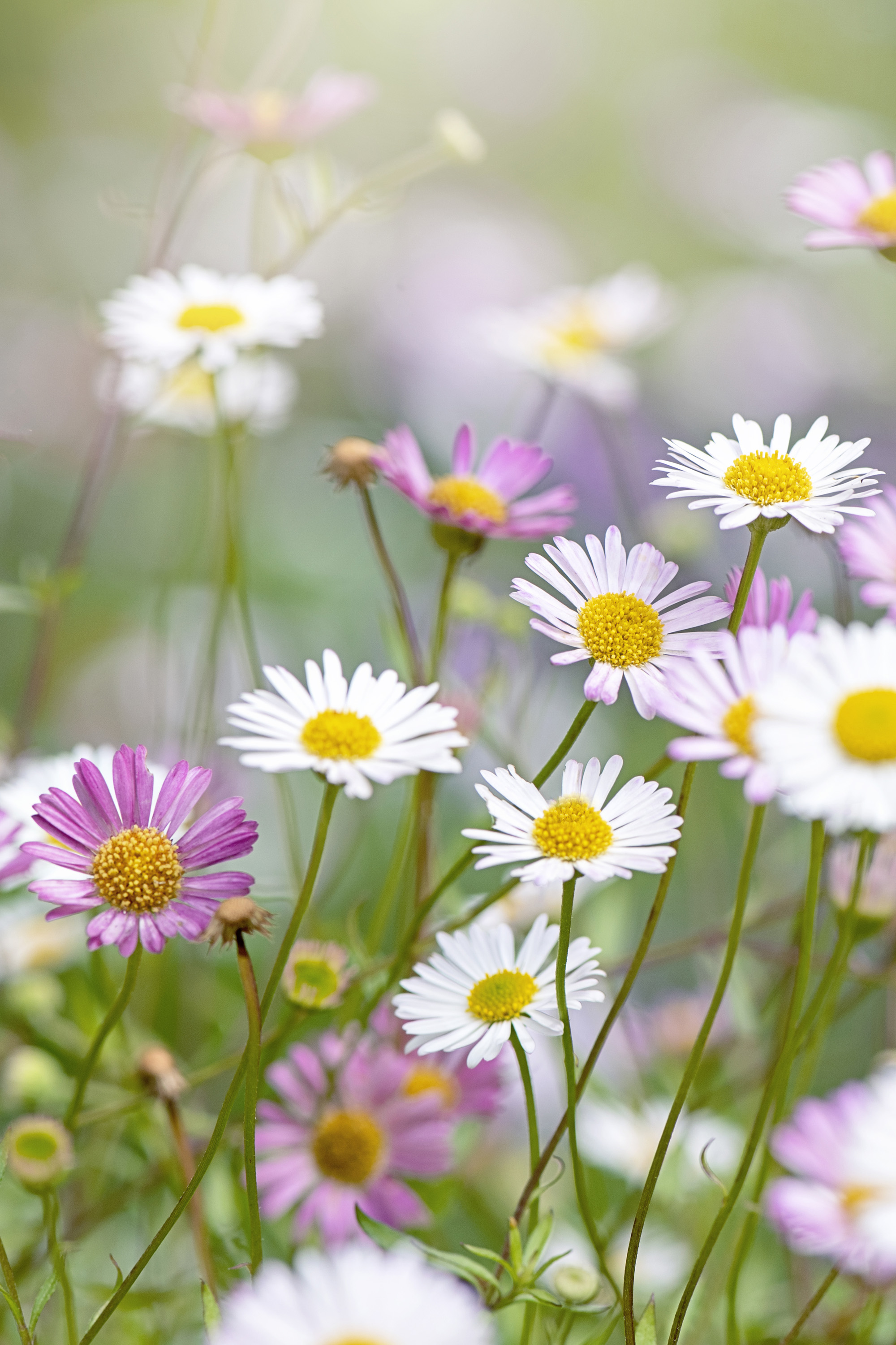
- Height: 1ft (0.3m)
- Spread: 3.2ft (1m)
- Hardiness: USDA 8–11 (UK H3–H4)
This plant, also known as Mexican fleabane or Mexican daisy, is one of those drought resistant plants which will grow from the crack in a pavement, or defy gravity by clustering over your garden wall. It has tiny, starry white flowers on a mat of small leaves,
Placed in a pot, planted as a border edging, or in gravel, it provides a fountain of flowers from late spring to mid-fall. It will die back in winter, only to emerge the next season. The only attention it needs is to tidy up long stems in the autumn. It is a prolific self-seeder, so once you have this plant in your garden, it is probably here to stay!
16. Hollyhock
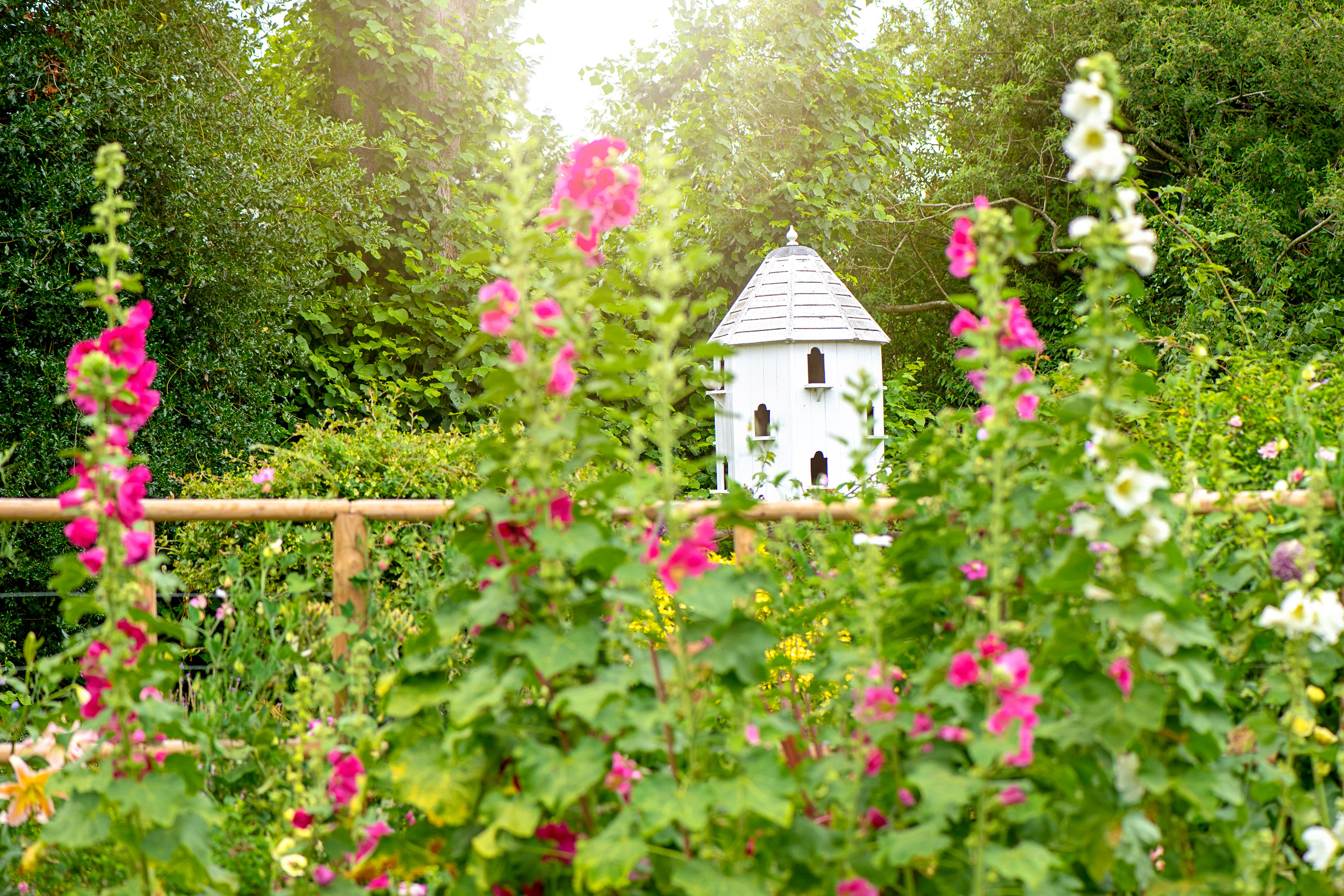
- Height: 8.2ft (2.5m)
- Spread: 1.6ft (0.5m)
- Hardiness: USDA 3–10 (UK H4)
Perfect plants for hot, dry areas in cottage-style gardens, the humble hollyhock produces lots of flowers on one tall spike. Choose from dark red, pretty pinks, and pure white.
The young plants and seedlings need regular watering (the RHS recommends that the top 6in/15cm of soil is kept damp, but not soggy in the first few months) but after that, these plants only need attention in very long, hot spells.
Once they have finished flowering, cut the spires down to ground level, and they will come back the following year.
17. Euphorbia
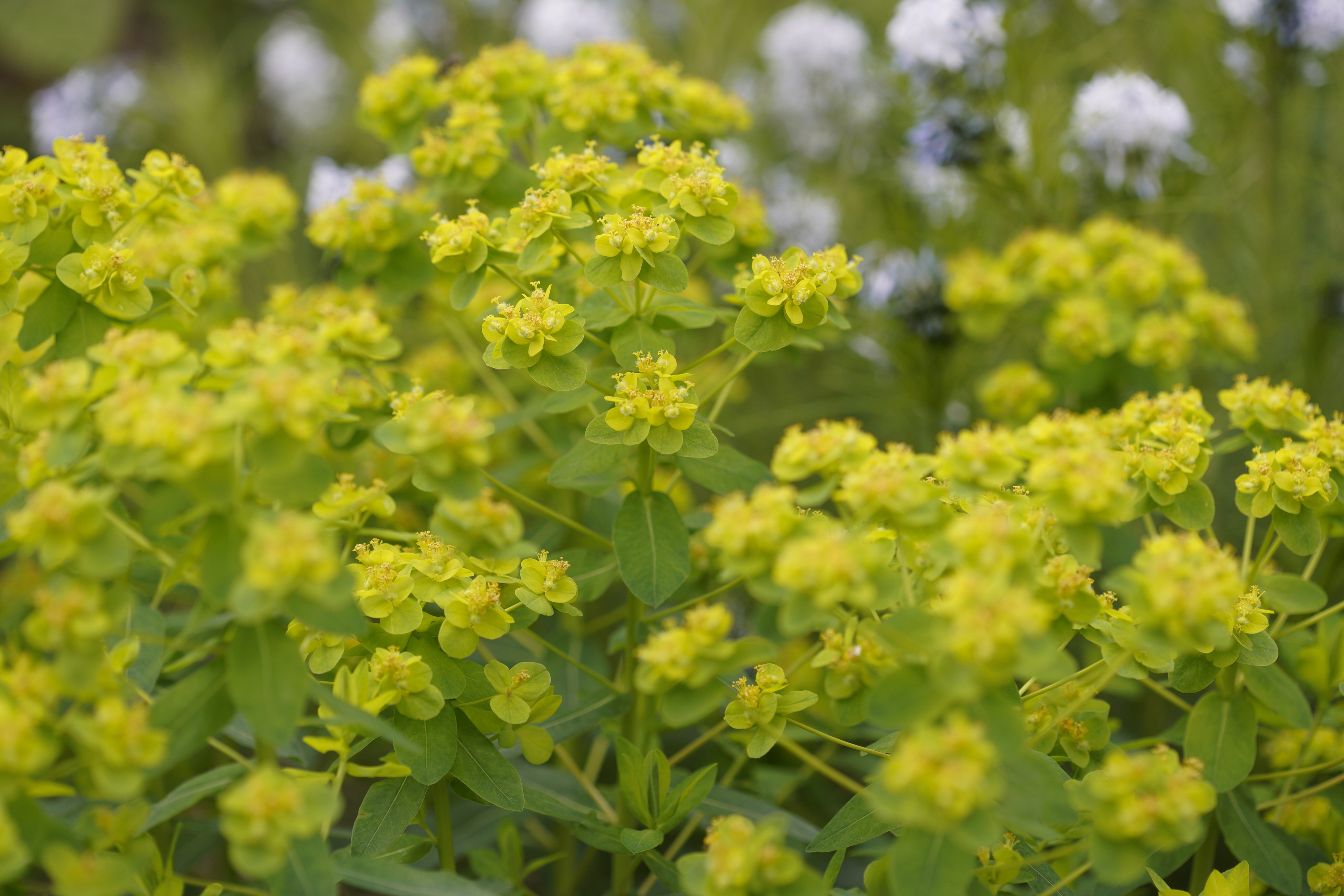
- Height: 4ft (1.2m)
- Spread: 4ft (1.2m)
- Hardiness: USDA 7–10 (UK H4)
There are hundreds of varieties of this useful plant, also known as spurge, making it a great addition to our list of the best drought tolerant plants.
For hot, sunny, sheltered spots, go for the Mediterranean type, with silvery gray leaves. Otherwise known as Euphorbia characias, it is a tall, billowy plant that will look good year-round. It has acid yellow flowers in the spring. Plant it in either the autumn or spring.
Euphorbia will also thrive in dry shade, and the zingy lime green foliage always makes a splash.
Laura Heybrook cautions against planting euphorbias in a small garden if you have young children and are looking for family garden ideas as the milky sap can be an irritant to skin. These plants will also spread.
18. Olive tree
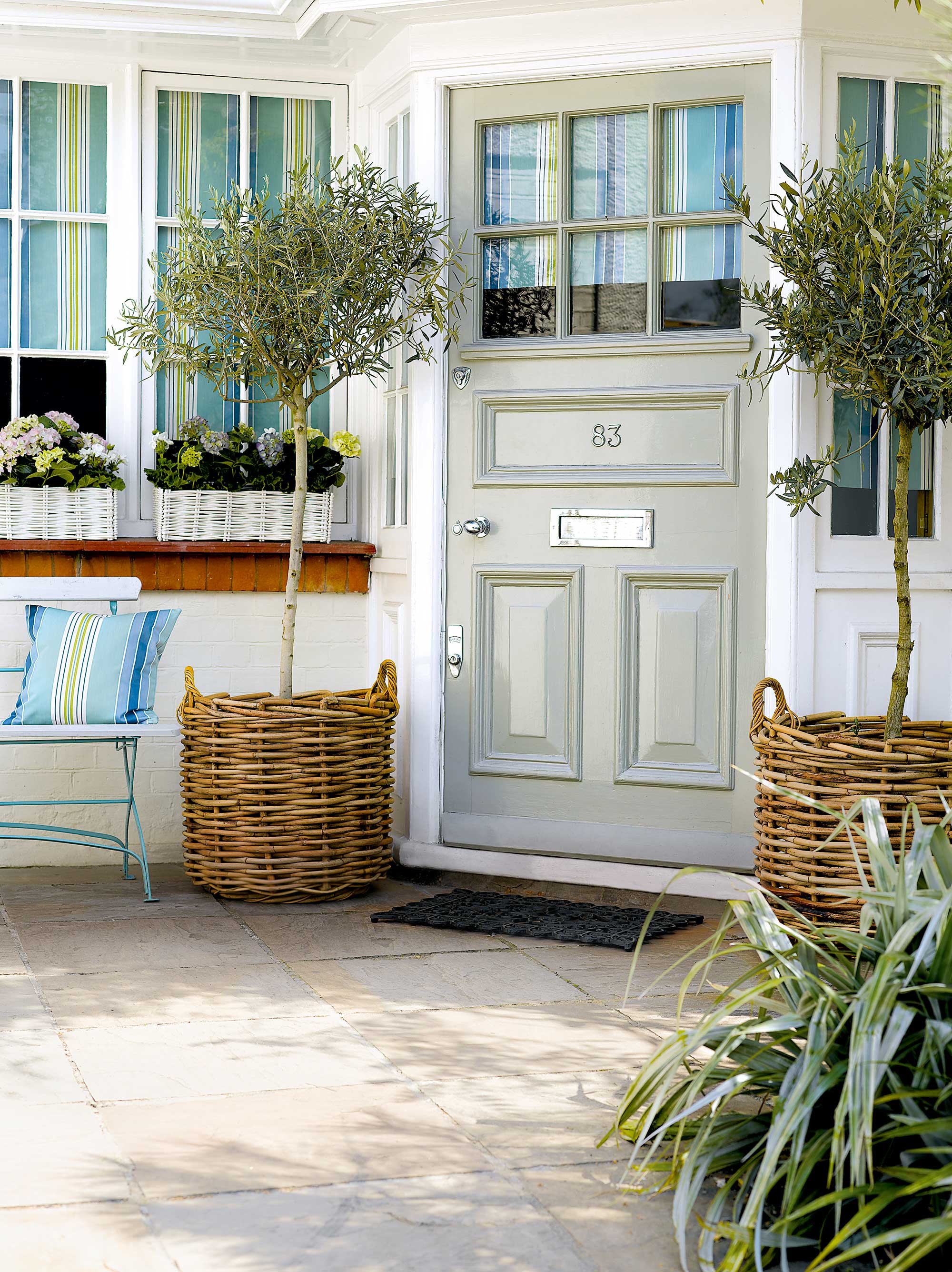
- Height: 29.5ft (9m)
- Spread: 39ft (12m)
- Hardiness: USDA 8–10 (UK H3)
Drought resistant plants often have gray or silvery green leaves which reflect the sun's rays, and the olive tree is a classic example. These elegant evergreens from the Mediterranean offer a holiday vibe in summer and welcome structure in the colder months.
Add some grit to the container if you are growing an olive tree in a pot, and use something like John Innes No 3 compost (one part grit to five parts compost is about right).
Water the tree for the first year, and after that, it will require a regular can-full to stop it from drying out completely. Olive trees will survive mild winters in the UK and in similar climates, but if the temperature is likely to plunge below minus 14˚F (10˚C), you will need to consider how to protect plants from winter by covering them with horticultural fleece.
19. Eryngium
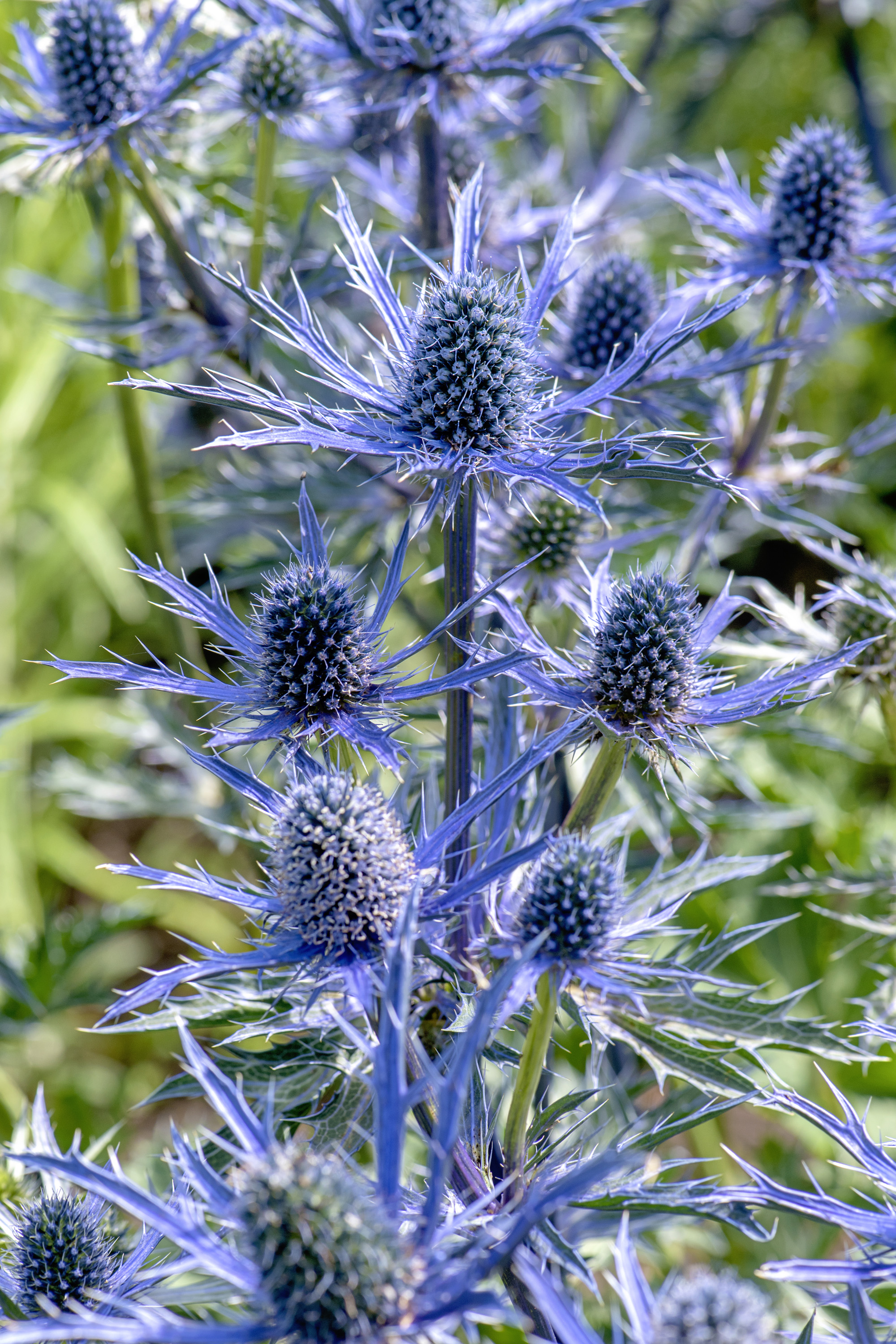
- Height: 2ft (60cm)
- Spread: 2ft (60cm)
- Hardiness: USDA 4–9 (UK H4)
There are 250 species of the 'sea holly', which has angular, spiny, thistle-like flowers with a jagged ruff around the head, on tough silvery-blue or green foliage. These are tough, trouble-free plants that come back year after year.
Not only are they a top choice for the best drought tolerant plants, but they also thrive in poor soil, in coastal areas, and in gravel gardens. They form structural clumps which provide interest all winter as the seed heads will stay upright. Or you can cut and dry them for a vase – find out how to dry flowers in our guide.
Opt for 'Peacock Blue' or 'Big Blue' for large, intensely colored flowers, while 'Silver Ghost' is a particularly silvery form. Mix with ornamental grasses for a contemporary look.
20. Argyrocytisus battandieri
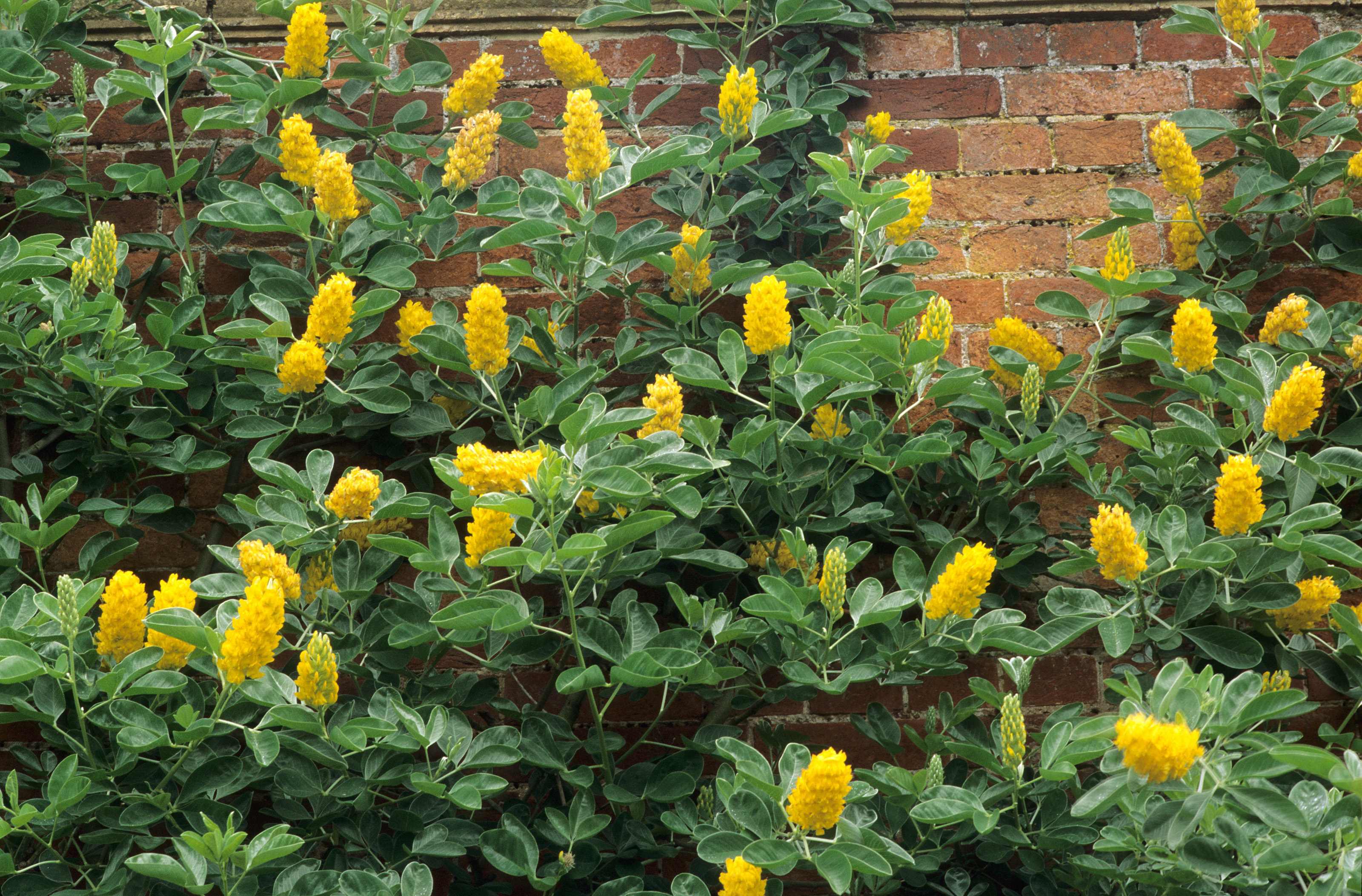
- Height: 13ft (4m)
- Spread: 13ft (4m)
- Hardiness: USDA 6–9 (UK H4)
With clusters of erect, yellow flowers on silky gray-green foliage, this is a very good choice for a wall-cover shrub, as it can reach 13ft (4m) in height and spread. Put a table and chairs nearby to take full advantage of the gorgeous pineapple scent of the blooms.
Originating from Morocco, the plant, also known as pineapple broom, will tolerate light, sandy, gritty soil and drought conditions, but make sure it is watered in for a few months after planting so it gets properly established.
21. Kniphofia
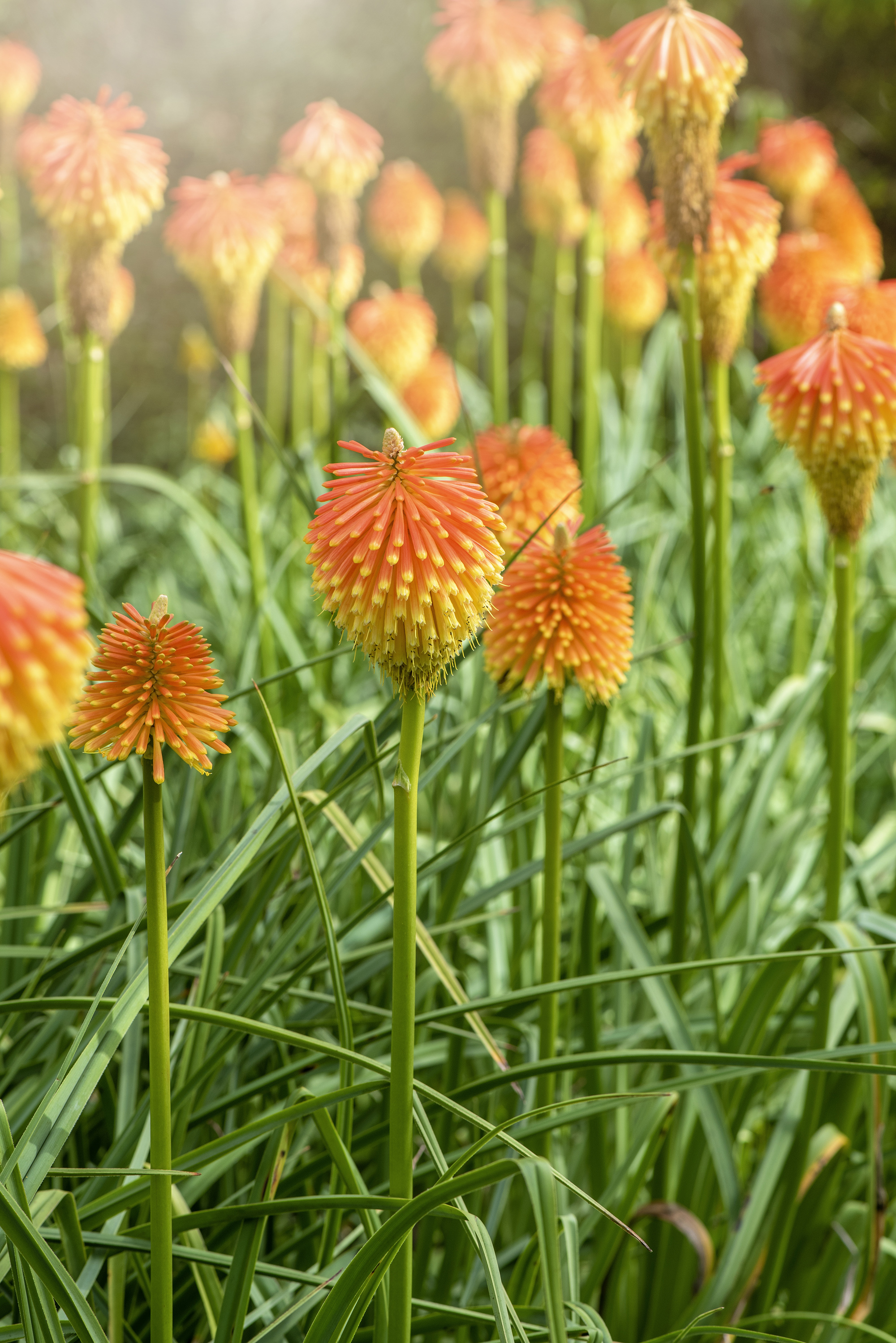
- Height: 5ft (1.5m)
- Spread: 3.3ft (1m)
- Hardiness: USDA 7–9 (UK H3–H4)
They were big in the 1970s and now, red hot pokers, or kniphofia, are back on-trend and ideal plants for hot, dry areas. Perfect for hot-colored schemes and tropical gardens, the tall, intensely-hued flowers rise on long, strong stems above the blade-like evergreen foliage. 'Mango Popsicle' is a true orange, which really does resemble an ice lolly, while 'Traffic Lights' blends amber and green tones in one flower.
Leave plenty of room for this plant in your garden borders so that it does not overwhelm other plants, but apart from that, it needs virtually no care or maintenance.
How do you know if a plant is drought tolerant?
Always look at the plant label to understand which conditions plants require.
It is also possible to tell which plants are likely to be drought resistant by looking for certain characteristics. These include silvery-colored or light leaves which reflect sunlight, and tiny hairs on leaves and stems that trap moisture.
Some of the other best drought tolerant plants, such as succulents, have fleshy leaves and stems which are water retaining.
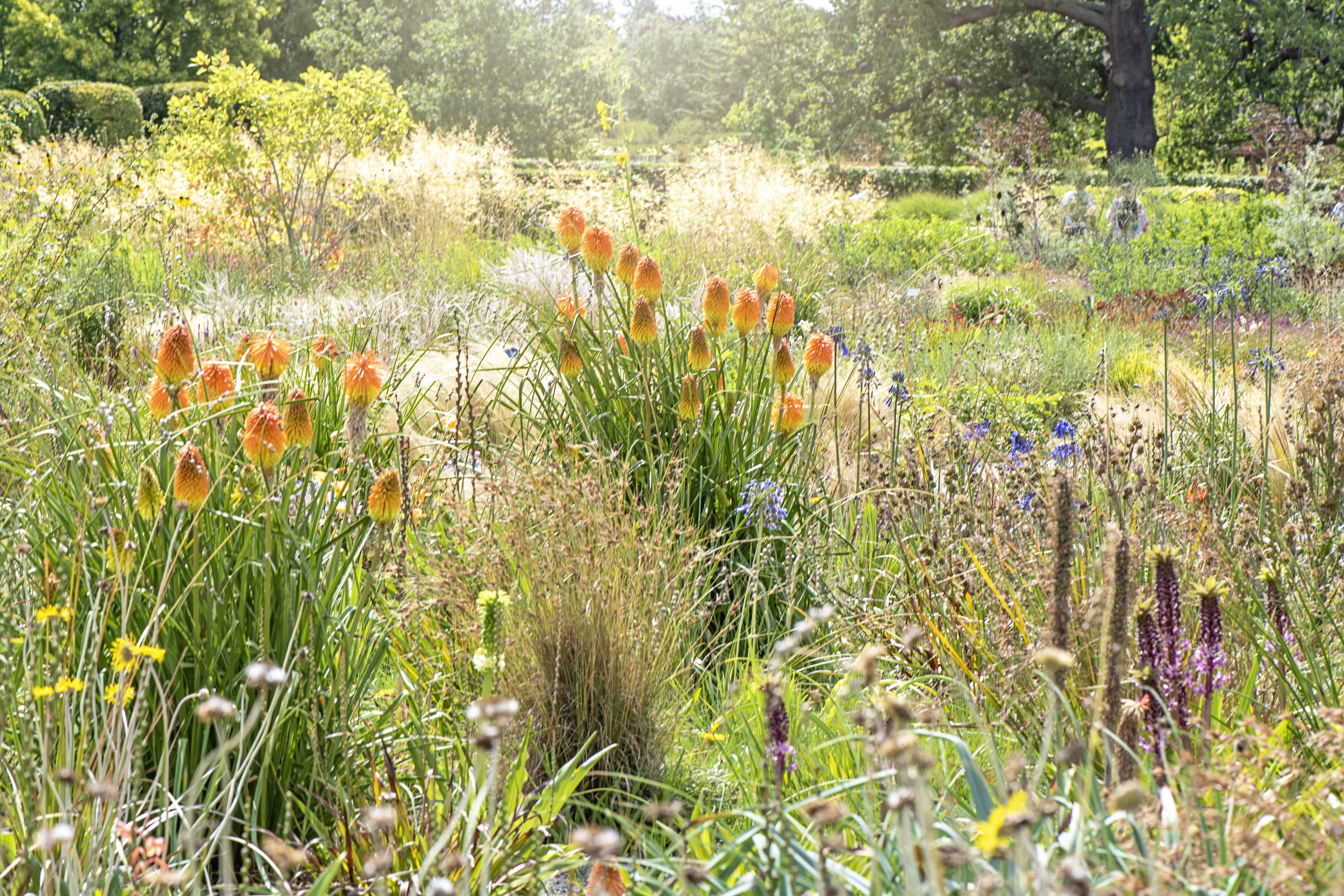

An experienced freelance journalist, editor and columnist writing for national magazines and websites, Fiona now specialises in gardens. She enjoys finding and writing about all kinds, from the tiniest town plots to impressively designed ones in grand country houses.
- Anne SwithinbankFreelance writer
